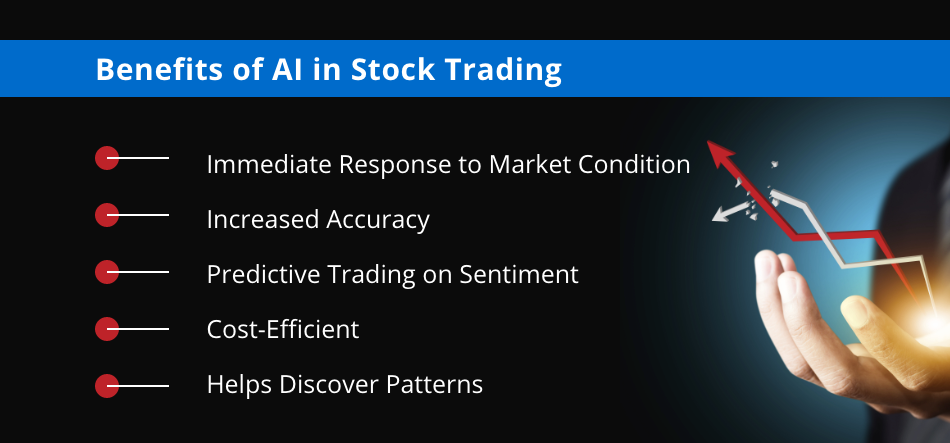Examining the quality of the data and sources utilized by AI-driven stock predictions and trading platforms is critical to ensure accurate and reliable insight. A poor quality of data could lead to poor predictions, financial losses, or mistrust toward the platform. These are the top 10 suggestions to evaluate the quality of data and sources:
1. Verify data source
Find out the source of the data Ensure the platform is reliable and well-known providers of data (e.g., Bloomberg, Reuters, Morningstar, or exchanges like NYSE, NASDAQ).
Transparency: The platform must clearly disclose its data sources and regularly update them.
Avoid single source dependency: Reliable platforms usually aggregate information from multiple sources to reduce biases.
2. Check the Freshness of Data
Real-time as opposed to. delayed data: Determine whether the platform offers real-time information or delayed information. Real-time is important for trading that is active. However, data that is delayed could be enough for long-term analytical purposes.
Update frequency: Examine the frequency with which data is updated.
Accuracy of historical data: Make sure that the accuracy of historical data and that it is free from gaps or anomalies.
3. Evaluate Data Completeness
Search for missing data. Examine for any gaps in the historical data, missing tickers or financial statements that aren't complete.
Coverage - Make sure the platform you select covers all stocks, indices and other markets that are relevant to trading strategies.
Corporate actions: Ensure that the platform is able to take into account stock splits and dividends. Also, verify if it is able to account for mergers.
4. Accuracy of test results
Cross-verify your data: Compare the data of your platform against other reliable sources.
Search for errors through examining the outliers or financial metrics that are incorrect.
Backtesting: You can use old data to test trading strategies. Examine if they meet your expectations.
5. Assess the Data Granularity
Detail: Make sure the platform provides granular data like intraday prices, volume bid-ask spreads, as well as the depth of an order book.
Financial metrics: Ensure that the platform has complete financial statements, such as the income statement, balance sheet and cash flow. Also, ensure that it has key ratios such as P/E (P/B), ROE (return on equity) and so on. ).
6. Make sure that Data Cleaning is checked and Processing
Data normalization - Ensure that the platform normalizes your data (e.g. making adjustments dividends or splits). This will ensure consistency.
Outlier handling: See how the platform deals with anomalies or outliers in the data.
Data imputation is not working: Find out whether the platform is using solid techniques to fill in the missing data points.
7. Assessment of Consistency in Data
Timezone alignment: Ensure that all data is aligned to the same local time zone in order to avoid discrepancies.
Format consistency - See if data are presented in the same format (e.g. units and currency).
Cross-market consistency: Verify that data from different exchanges or markets is consistent.
8. Determine the relevancy of data
Relevance to the trading strategy Ensure the data aligns with your trading style (e.g., technical analysis or quantitative modeling, fundamental analysis).
Selecting features Choose a platform that includes features that are relevant and can help you make better prediction.
Verify the security and integrity of your data
Data encryption: Ensure that your platform is using encryption to safeguard information during storage and transmission.
Tamper proofing: Ensure that the information on the platform isn't being altered.
Verify compliance: The platform should be compliant with laws on data protection.
10. Transparency of the AI model on the Platform can be testable
Explainability: Make sure the platform provides you with insights into the AI model's use of data to make predictions.
Verify that bias detection is present. The platform should actively examine and reduce any biases in the model or data.
Performance metrics. Examine the performance metrics like precision, accuracy, and recall to determine the reliability of the platform.
Bonus Tips
Feedback and reviews from users: Use reviews and user feedback to evaluate the trustworthiness of a platform and the quality of its data.
Trial period: Use the trial period for free or demo to try the data quality of the platform and features prior to committing.
Support for customers - Ensure that the platform has the capacity to provide a solid customer service to address any data related issues.
Follow these tips to assess the source of data and the quality for AI stock prediction platforms. Make informed choices about trading using this data. View the top get the facts on ai investment platform for site advice including investing ai, ai stock trading, ai stock trading app, investment ai, ai stocks, ai investing platform, ai for investment, ai investing, ai stock, ai stock trading and more.

Top 10 Things To Consider When Looking At Ai Trading Platforms To Evaluate Their Social And Community Features As Well As Their Community
Understanding how people communicate, interact, and learn is essential for understanding the AI-driven trading as well as platform for stock predictions. These features can greatly enhance the user experience and offer important support. Here are the top 10 suggestions to analyze the community and social aspects of such platforms:
1. Active User Communities
Tips: Make sure the platform is active with a user base that regularly engages in discussion, shares information and offers feedback.
Why: An active community is a sign of a healthy community where people can learn and grow.
2. Discussion Forums and Boards
Check the activity and quality of message boards or discussions forums.
Why? Forums let users ask questions, discuss strategies and market trends.
3. Social Media Integration
Tips: Make sure the platform is linked to social media channels to share news and insights (e.g. Twitter, LinkedIn).
Why: Social media can be utilized to enhance engagement and deliver actual-time market data.
4. User-generated content
Look for features that enable users to share, create and edit content.
Why? User-generated content promotes collaboration and gives a range of perspectives.
5. Expert Contributions
Tip - Check whether the platform has contributions from experts in the field, like market analysts or AI specialists.
The reason: Experts' opinions give credibility and depth to discussions in the community.
6. Chat and Real-Time Messaging
Tip: Check whether users are able to communicate with one another immediately using real-time messaging or chat.
Reason: Real-time communication allows rapid exchange of information and collaboration.
7. Community Moderation & Support
Tip Assess the level or moderating and customer support within the community.
Reason: Effective moderation helps to ensure a positive and respectful environment as well as assisting in the resolution of user issues promptly.
8. Events and Webinars
Tip Check whether the platform hosts live Q&As with experts or hosts webinars.
Why: These events offer the opportunity to interact directly and interaction with professionals from the industry.
9. User Reviews and Feedback
Tips: Be on the lookout for features that permit users to provide feedback or opinions about the platform and its features.
Why: The feedback from users helps to discover strengths and areas for improvement in the ecosystem.
10. Rewards and Gamification
Tips - Make sure to check whether your platform supports games (e.g. badges, leaderboards) or rewards given for active participation.
Gamification is a highly effective method that helps users engage more with their community and platform.
Bonus Tip - Security and Privacy
Be sure that all community and social features include robust security and privacy features to safeguard users' information and interactions.
If you take the time to thoroughly review these aspects and evaluating these aspects, you can decide if the AI software for stock predictions and trading has an active and friendly community that will enhance your experience in trading and increases your knowledge. Check out the recommended ai in stock market examples for blog recommendations including chart ai trading, invest ai, best ai stock prediction, stock predictor, ai stock prediction, best ai penny stocks, stock predictor, ai options trading, stock trading ai, ai trading tool and more.

 Melissa Joan Hart Then & Now!
Melissa Joan Hart Then & Now! Tyra Banks Then & Now!
Tyra Banks Then & Now! Brooke Shields Then & Now!
Brooke Shields Then & Now! Morgan Fairchild Then & Now!
Morgan Fairchild Then & Now! Teri Hatcher Then & Now!
Teri Hatcher Then & Now!